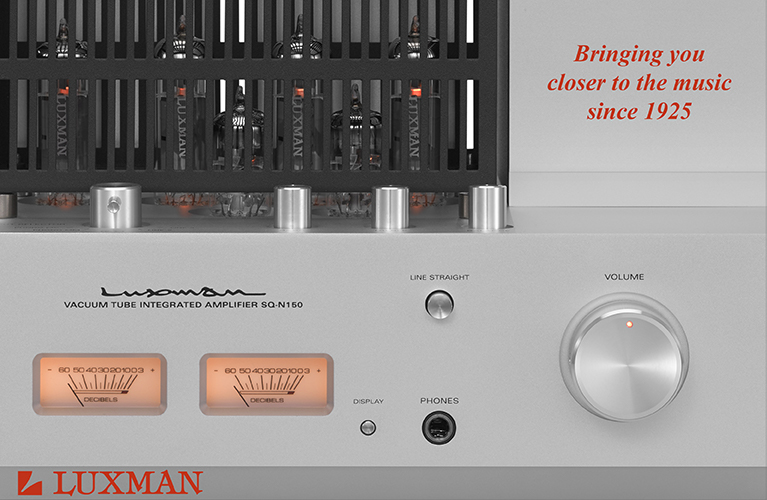Note: Measurements can be found through this link.
 British manufacturer Cyrus Audio has been around since the 1980s, when they were affiliated with Mission Electronics and introduced the Cyrus 1 integrated amplifier. In the mid-1990s, I owned a Cyrus III integrated amplifier with optional PSX-R power supply, driving Mission 762 and 760i loudspeakers, and still have fond memories of that system. However, it had been a long time since I’d listened to anything from Cyrus or Mission -- for years, their products have been hard to find in North America. But now, via distributor Kevro International, Cyrus has returned.
British manufacturer Cyrus Audio has been around since the 1980s, when they were affiliated with Mission Electronics and introduced the Cyrus 1 integrated amplifier. In the mid-1990s, I owned a Cyrus III integrated amplifier with optional PSX-R power supply, driving Mission 762 and 760i loudspeakers, and still have fond memories of that system. However, it had been a long time since I’d listened to anything from Cyrus or Mission -- for years, their products have been hard to find in North America. But now, via distributor Kevro International, Cyrus has returned.
Cyrus makes conventional class-AB power amps as well as more complex, high-end, zero-feedback designs. However, their latest offering, the Stereo 200 class-D power amplifier, is based on a proprietary topology that Cyrus introduced in their Lyric all-in-one systems. The Stereo 200 slots into the company’s power-amp hierarchy between the entry-level X Power and the flagship Mono X zero-feedback monoblock. At $3499 USD, the Stereo 200 is not cheap, but I was intrigued by its high power rating and ultracompact design.
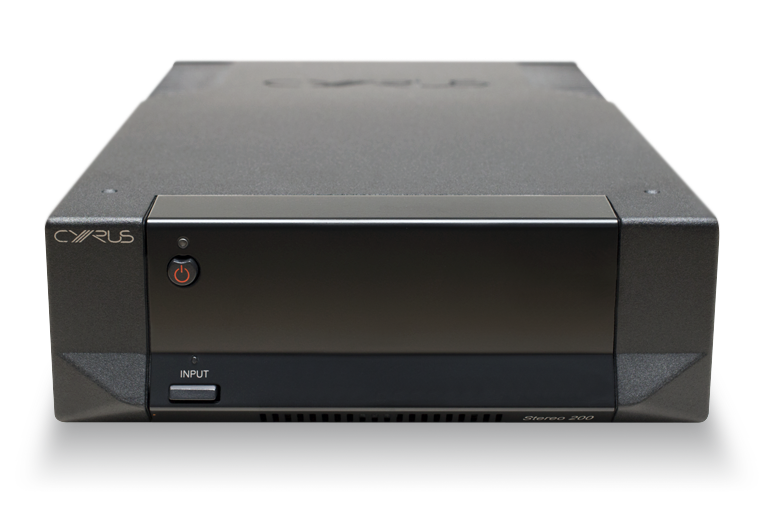
Marching to a different drummer
When I brought home the Cyrus Stereo 200, I placed it beside me on the front seat of my car -- not something I can usually do with a high-powered amp. And because it measures only 8.4”W x 2.8”H x 14”D, weighs just 15.2 pounds, and comes in a relatively small box, I was able to carry it under one arm, while using the other to hold a bag of groceries and fiddle with my door keys. Try that with a typical high-end power amp.
Anyone familiar with Cyrus products will immediately recognize, on first glimpsing the Stereo 200, the compact HA7 case that has housed every Cyrus component since the introduction of the Cyrus III, more than 20 years ago. The case is now made of cast aluminum instead of magnesium, but it has a nice, black-anodized finish instead of the shiny gloss of the original III. There are only a few vents in the bottom panel, near the back, in addition to heatsink fins that run along the side panels from front to rear. As well as being quite small, the Stereo 200 felt very sturdy, almost like a solid block.
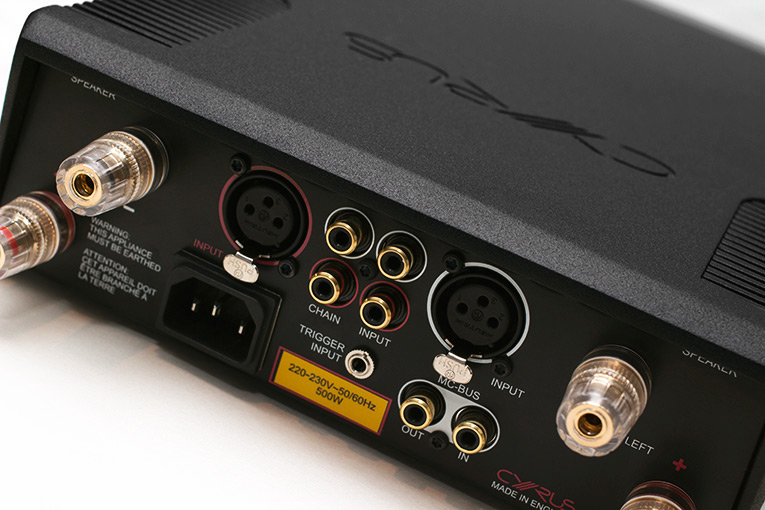
Looking at the rear panel, I was pleasantly surprised to see two pairs of large, widely spaced speaker binding posts, instead of the BFA speaker connectors found on most Cyrus amps. There are both balanced (XLR) and unbalanced (RCA) inputs, in addition to an unbalanced (RCA) output, labeled Chain, for connecting the Stereo 200 to a subwoofer(s) or to additional Cyrus power amps, for biamping or triamping. The unbalanced outputs remain active even when the balanced inputs are used. There is also an IEC power inlet for the provided power cord. The Stereo 200 can be turned on automatically with auto sensing, a 12V trigger, the MC-Bus (when connected to other Cyrus products), or by pressing the Power button on the front panel.
Also on the front are an Input selection button, and a power-indicator LED that glows green when the balanced inputs are selected, orange for the unbalanced inputs, and red when the Stereo 200 is muted due to an overload condition.
The Stereo 200 is specified to produce a continuous power output of 175Wpc into 8 ohms or 325Wpc into 4 ohms, both channels driven, at 0.1% THD+N. But for those wondering how the Stereo 200 got its name, it’s also specced to output 200Wpc into 6 ohms. According to Jeremy Brown, Cyrus’s export sales manager, specifying an amp’s power output into 6 ohms is a more “real world” spec -- most loudspeakers have a nominal impedance of 6 or 4 ohms.
The Stereo 200 is a hybrid design: a combination of Cyrus’s proprietary class-D topology and a very-high-power linear power supply featuring a large, 475VA toroidal transformer. The capacitors are a mix of bulk electrolytic, ceramic, and polypropylene types claimed to optimize the filtering and speed of current delivery to the output stages. Cyrus also claims that the Stereo 200’s caps can store a total of some 50 joules of almost instantaneously available energy. To aid the dissipation of heat, the switching output stage and voltage regulators are bolted directly to the chassis.
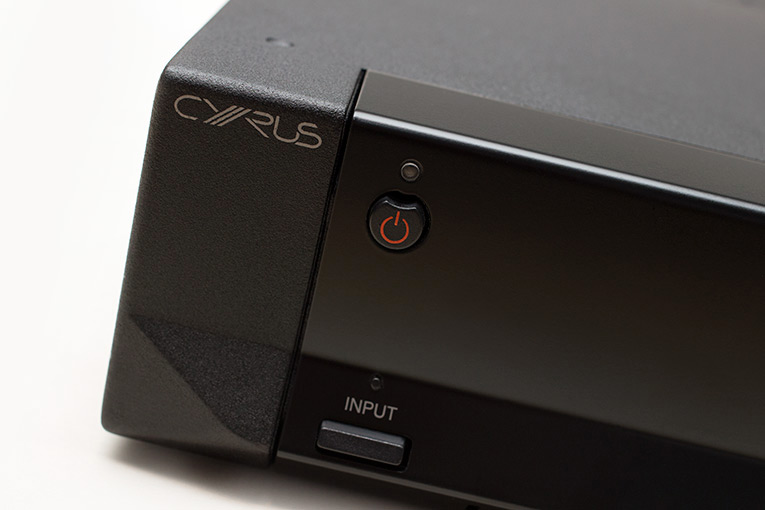
One feature of the Stereo 200 first appeared in Cyrus’s Lyric class-D all-in-one systems: Speaker Impedance Detection (SID). Many class-D amps have inaccurate frequency output responses, especially in the high frequencies, when connected to loads of differing impedances. Cyrus counteracts this by having the amplifier’s SID circuit send a signal to the left-channel speaker on power-up, to measure that speaker’s high-frequency impedance. The amp then adjusts its high-frequency output so that it varies by no more than +/-0.33dB across the frequency range, regardless of load impedance. Just make sure that you unplug the Stereo 200 each time you change speakers -- SID measures the speaker only the first time it’s powered up after being plugged in.
There appears to be a lot of technology and innovation in the design of the Stereo 200. Kevro International backs it with a three-year warranty -- a year more than offered directly by Cyrus in the UK.
Near-perfect cadence
The Stereo 200 is small. Its sound was anything but. As soon as I hooked it up to my reference speakers, a pair of KEF R900 floorstanders, it was evident that this little amp was a powerhouse. Its character was slightly forward, but not objectionably so -- in fact, it gave the amplifier a neutral but lively sound that was always involving. In many respects, the Stereo 200 reminded me of the clear, engaging sound of Hegel Music Systems’ H80 integrated amplifier, which I recently reviewed, and of the sounds of other Hegel amps I’ve heard.
Tom Petty’s voice was front and center, with a crisp but nonfatiguing sound, in “Free Fallin’,” from his Full Moon Fever (24-bit/96kHz FLAC, Geffen). Acoustic guitars were clear and polished, and juxtaposed with a kick drum that had realistic weight. Although this album isn’t the cleanest sounding, the Stereo 200 did an excellent job of delineating aural images. The more intense electric guitar in “Runnin’ Down a Dream,” and the desperate tone of the lyrics of “Yer So Bad,” were well served by the Cyrus’s balanced sound: full-bodied but never thick, and fast and crystalline without sounding threadbare.
I’ve recently been enjoying the Cowboy Junkies’ The Trinity Session (16/44.1 FLAC, RCA), long one of Doug Schneider’s favorite reference discs. The sense of space in “Misguided Angel,” captured on this recording by a single stereo microphone, was amazing. Margot Timmins’s voice was ever so slightly diffuse, but the holographic imaging of the instruments all around her was astounding. The soundstage of the Junkies’ cover of Lou Reed’s “Sweet Jane” spread even farther back into the acoustic, even though Timmins’s gently swaying vocal is accompanied by little more than light percussion and a lone guitar. The Stereo 200 captured from this recording some very deep bass sounds that sound like foot stomps, but at a relatively low level compared to the rest of the recording -- exactly how I imagine they would sound in a large space like Toronto’s Church of the Holy Trinity, where this album was recorded.
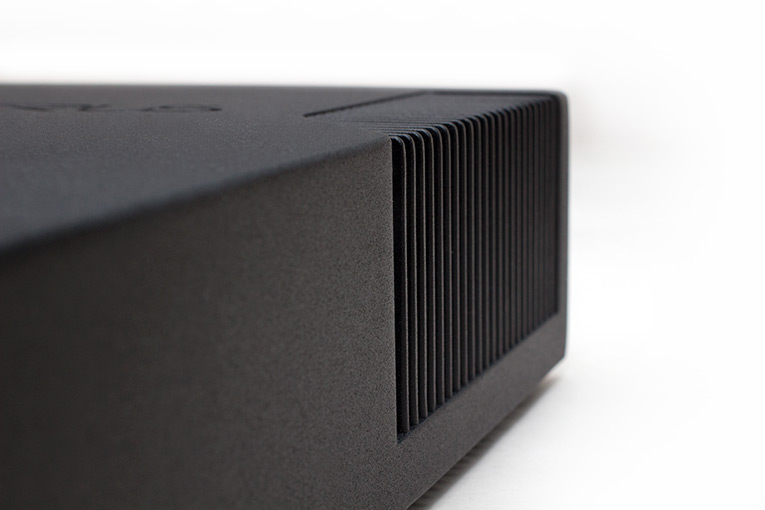
I then switched from the natural sound of The Trinity Session to the totally artificial, multitracked studio production of Billy Idol’s Vital Idol (16/44.1 FLAC, Capitol). Idol’s growling voice and the driving bass were delivered with authority and control that were astonishing for such a compact amplifier. The electric-guitar chords at the beginning of “To Be a Lover (Mother of Mercy Mix)” cut through the throbbing bass line and pounding drums, and Idol’s snarling voice had that rough, biting quality I’ve come to expect from him.
The Cyrus Stereo 200 is one of the cleanest-sounding, most precise amplifiers I have had in my system. The King’s Singers’ a cappella version of Don McLean’s “American Pie” on their Good Vibrations (16/44.1 FLAC, RCA Victor) is a slightly dry recording that at times sounds quite aggressive, at others very delicate. With the Cyrus, I felt that I was hearing everything in the recording. The tenor was well differentiated from the countertenors and baritones, and the very quiet background, and each voice, had a distinct, precise outline. By comparison, the Parasound Halo A 31 -- a 250Wpc, class-AB, three-channel amplifier ($3295) -- glossed over some of the very delicate directional cues, which made some of the voices blend slightly together and somewhat shrank the soundstage. The Parasound still sounded excellent, with a detailed and robust sound, but without quite the Stereo 200’s finesse in imaging.
The differences between the two amps were less apparent with the lusher production of the Beach Boys’ “Good Vibrations.” Going back to “American Pie,” the recording’s occasional dryness was evident with the Cyrus, but I didn’t find it disagreeable -- it seemed totally natural, and in balance with the overall sound of the recording. With the Cyrus, every voice and note seemed perfectly placed on the soundstage at exactly the right level and timbre -- the Stereo 200 never editorialized, and always sounded just right. Although Hegel’s H80 integrated hasn’t been in my system for quite some time, I remember its sound as being similar to the Cyrus’s: clean and immediate. However, as mentioned above, the Cyrus seemed totally natural and neutral, while the Hegel imparted to the sound a slight forward character that I nonetheless found very agreeable.
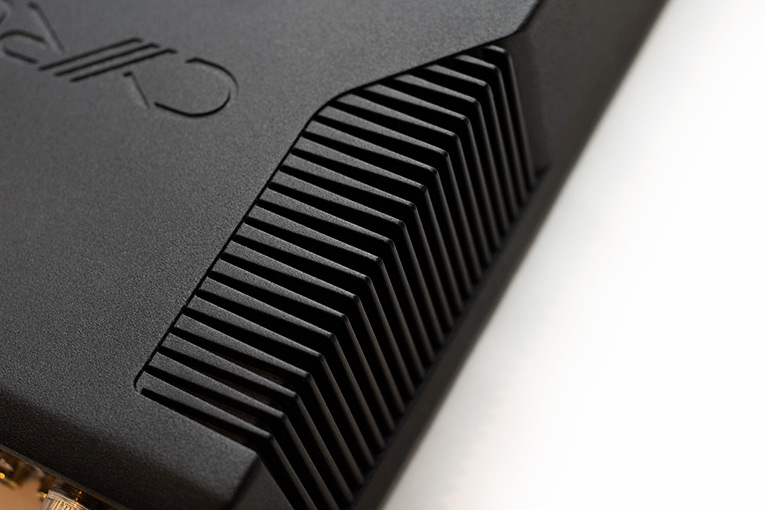
The Stereo 200 also performed very well when connected to Definitive Technology’s Mythos ST-L speakers, which have a squeaky-clean midrange and produce remarkable bass from their built-in powered subwoofers. The guitars on The Trinity Session were very “alive,” and the voices on this extremely pure-sounding recording had incredible presence. Through the Parasound Halo A 31 I heard less delineation of instruments and voices, which were all placed more in the plane described by the speakers’ baffles. Through the Cyrus, “Sweet Jane” had more depth, and Margo Timmins’s voice was more precisely positioned, slightly to the back and to the right of center, with the guitar more to the left, and nothing coming from directly between the speakers. With the Parasound A 31, not only did the guitar sound a little less “alive,” but the soundstage was shallower, and guitar and voices were closer together, with little sense of space between them. The Parasound’s slight warmth did benefit many other recordings, however, and Bruce Springsteen’s underrated Tunnel of Love (24/44.1 FLAC, Columbia/PonoMusic) was especially satisfying. His voice can sometimes sound a bit thin in “Brilliant Disguise” and “Spare Parts”; through the Halo A 31, it was full bodied.
Another class-D power amplifier currently in my system is NAD’s seven-channel M27, based on Hypex Ncore technology ($3999). Through the KEF R900s, the NAD’s fast, clean sound was similar to that of the Cyrus, but the Stereo 200 sounded slightly more relaxed. All of the detail and most of the imaging qualities of the King’s Singers’ version of “American Pie” were there with the NAD, but with a slightly forced quality in comparison to the Cyrus. This constricted the music, prevented it from flowing as effortlessly, and resulted in smaller apparent spaces between the six voices, whose images were less sharply drawn. Still, at only $500 more than the Cyrus for an additional five channels, the NAD M27 represents an incredible value in a 180Wpc multichannel amp.
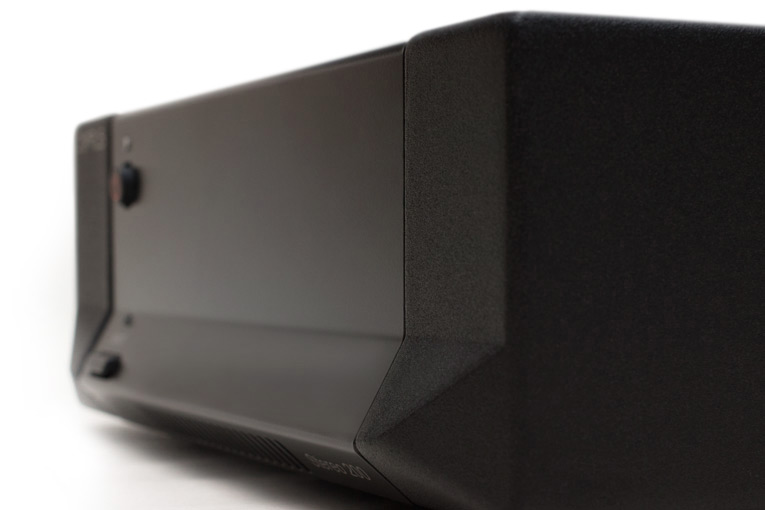
All of the amplifiers mentioned above had plenty of dynamics and bass control to spare. The larger, class-AB Parasound looked the part of a muscular solid-state amp, and had the fullest, most robust bass. It also seemed able to play a bit louder than the two class-D designs, though not by much -- and all three could play louder than I could comfortably bear for any length of time. Though the Parasound dwarfed the little Cyrus, the Stereo 200 actually had the more articulate bass, and could maintain a more coherent soundstage at very high SPLs. When I played “Rasputin (Bassflow 4.0 Mix),” from Boney M.’s Diamonds: 40th Anniversary Edition (16/44.1 FLAC, Sony), the Cyrus’s bass was punchier, and its cleaner imaging presented the more expansive soundstage required by this jock-rock remix of a Eurodisco guilty pleasure.
Whiplash
Judging the Cyrus Stereo 200 by looks alone, you might think it would prove a capable but somewhat polite-sounding amplifier in the sub-100Wpc range -- the sort of power amp that many associate with British high-end audio. But after hearing all that fantastic, powerful, natural sound coming from such a small package, you’d probably do a double take -- as I did. Cyrus has done an admirable job of developing their proprietary, hybrid class-D amplifier technology.
The Stereo 200 more than held its own against, and in some ways bettered the performance of the Parasound Halo A 31 and the NAD M27, which I consider to be two of the finest entry-level, high-end amplifiers available. At $3499, the Cyrus is more expensive, especially on a per-channel basis, but I’m sure that its modern, ultracompact design will win over many audiophiles. Cyrus Audio has been absent from North America for many years; I’m very pleased to welcome them back.
. . . Roger Kanno
rogerk@soundstagenetwork.com
Associated Equipment
- Speakers -- KEF R900, Definitive Technology Mythos ST-L
- Amplifiers -- Parasound Halo A 31, NAD M27
- Sources -- Oppo BDP-105 universal Blu-ray player, Asus VivoBook X200MA computer running Windows 8 and foobar2000
- Cables -- Nordost Quattro Fil interconnects and Super Flatline Mk.II speaker cables, AudioQuest Carbon USB cable
- Power cords -- Essential Sound Products MusicCord-Pro ES
- Power conditioners -- Blue Circle Audio Peed Al Sea Thingee, Zero Surge 1MOD15WI
Cyrus Audio Stereo 200 Stereo Amplifier
Price: $3499 USD.
Warranty: Three years parts and labor in North America; two years in the UK.
Cyrus Audio Ltd.
Ermine Business Park
Huntingdon, Cambridgeshire PE29 6XY
England, UK
Phone: +44 (0)1480-410900 (not for customer inquiries)
E-mail: info@cyrusaudio.com
Website: www.cyrusaudio.com
North American distributor:
Kevro International
902 McKay Road #4
Pickering, Ontario L1W 3X8
Canada
Phone: (800) 667-6065
E-mail: info@kevro.com
Website: www.kevro.com






















